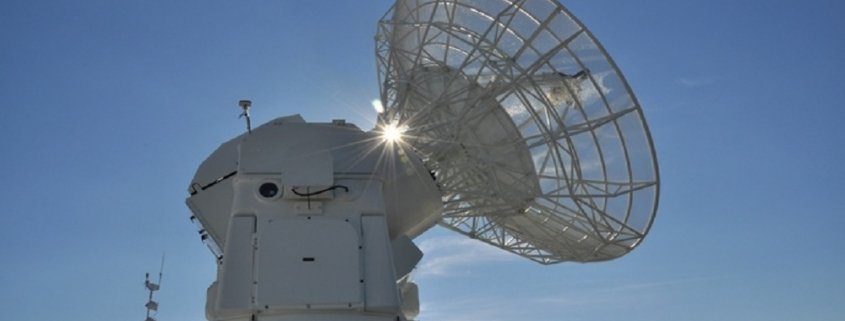Radar Sensor Market is estimated to grow at a CAGR of 17.51% to reach US$30.536 billion by 2029
The global radar sensor market is expected to grow at a CAGR of 17.51% during the forecasted period, with a market valuation of US$13.627 billion in 2021 and is expected to reach US$30.536 billion by 2029.
The increasing adoption within the aerospace and defence industry, coupled with heightened investments in the United States Air Force, are key factors propelling the radar sensor market forward.
As per the report, the radar sensor market is expected to grow significantly.
Radar sensors are extensively employed for their capacity to identify, pinpoint, and monitor objects, rendering them indispensable elements in various sectors including automotive, aerospace, defence, and industrial, among others. A primary driver of growth in the worldwide radar sensor market is the rising need for advanced driver assistance systems (ADAS) and self-driving vehicles within the automotive industry. Radar sensors are crucial in guaranteeing vehicle safety by facilitating functions such as adaptive cruise control, collision avoidance, and parking assistance. In June 2023, SICK unveiled the RMS3xx radar sensor, which combines SICK’s cutting-edge radar technology with dependable hardware and efficient software.
The radar sensor market can be segmented based on the type of radar system it encompasses, which includes bistatic radar, continuous wave radar, instrumentation radar, and weather radar. Bistatic radar systems utilize separate transmitting and receiving antennas, providing distinct advantages in terms of stealth detection and target identification. Continuous wave radar systems operate by emitting a continuous signal, offering high accuracy and sensitivity, making them suitable for applications such as speed measurement and distance sensing. Instrumentation radar systems are designed for precise measurements in various fields, including aerospace, meteorology, and industrial applications, offering advanced capabilities for monitoring and analysis. Weather radar systems specialize in detecting and tracking weather phenomena such as precipitation, storms, and atmospheric conditions, providing critical data for meteorological forecasting and disaster management. These diverse types of radar systems cater to a wide range of applications across industries, contributing to the overall growth and innovation within the radar sensor market.
The radar sensor market can be delineated based on its application across various sectors, including automotive, aerospace and defense, security and surveillance, and industrial domains. In the automotive sector, radar sensors play a pivotal role in advanced driver assistance systems (ADAS), enabling features like adaptive cruise control, collision avoidance, and autonomous emergency braking. In aerospace and defense, radar sensors are extensively utilized for surveillance, target detection, and navigation purposes, enhancing situational awareness and ensuring mission success. The security and surveillance industry relies on radar sensors for perimeter monitoring, intruder detection, and border surveillance, providing reliable and effective surveillance solutions in both civilian and military contexts. In the industrial sector, radar sensors find applications in areas such as object detection, level measurement, and motion sensing, facilitating automation, process control, and safety enhancement across manufacturing, logistics, and construction industries. These diverse applications underscore the versatility and significance of radar sensors across multiple sectors, driving their widespread adoption and market growth.
In the United States, the demand for radar sensors is increasing rapidly due to the growing automation, particularly with the advancements in Industry 4.0 and the shift towards autonomous driving. This trend underscores the heightened need for presence and motion detection to enhance safety and control measures. The expansion of the radar sensor market in the country is further fueled by the evolution of 5G and the Internet of Things (IoT), along with the escalating research and development investments in radar technology. In August 2023, RTX announced that the U.S. Air Force would commence testing a new medium-range radar sensor for the National Advanced Surface-to-Air Missile System, following several recent government contracts. With grants totaling $7 million from the Air Force Research Laboratory’s Strategic Development, Planning, and Experimentation Office, as well as the Office of the Secretary of Defense’s Rapid Prototyping Program, RTX aims to advance the development and testing of its GhostEye MR radar.
In a highly competitive market, several companies offer radar sensors, including Geolux d.o.o., Baumer Holding AG, ASTYX GmbH, ZF Friedrichshafen AG, Hans Turck GmbH & Co. KG, HENSOLDT Group, Smart Microwave Sensors GmbH, InnoSenT GmbH, Banner Engineering Corp., and SICK AG.
View a sample of the report or purchase the complete study at https://www.knowledge-sourcing.com/report/global-radar-sensor-market
This analytics report segments the radar sensor market on the following basis:
- By Type of Radar System
- Bistatic Radar
- Continuous Wave Radar
- Instrumentation Radar
- Weather Radar
- Others
- By Application
- Automotive
- Aerospace & Defense
- Security & Surveillance
- Industrial
- Others
- By Geography
- North America
- United States
- Canada
- Mexico
- South America
- Brazil
- Argentina
- Others
- Europe
- United Kingdom
- Germany
- France
- Others
- Middle East and Africa
- UAE
- Israel
- Saudi Arabia
- Others
- Asia Pacific
- Japan
- China
- India
- South Korea
- Thailand
- Taiwan
- Indonesia
- Others
- North America
- Smart Sensors Market Share
- Image Sensors Market Share
- Motion Sensor Market Size



